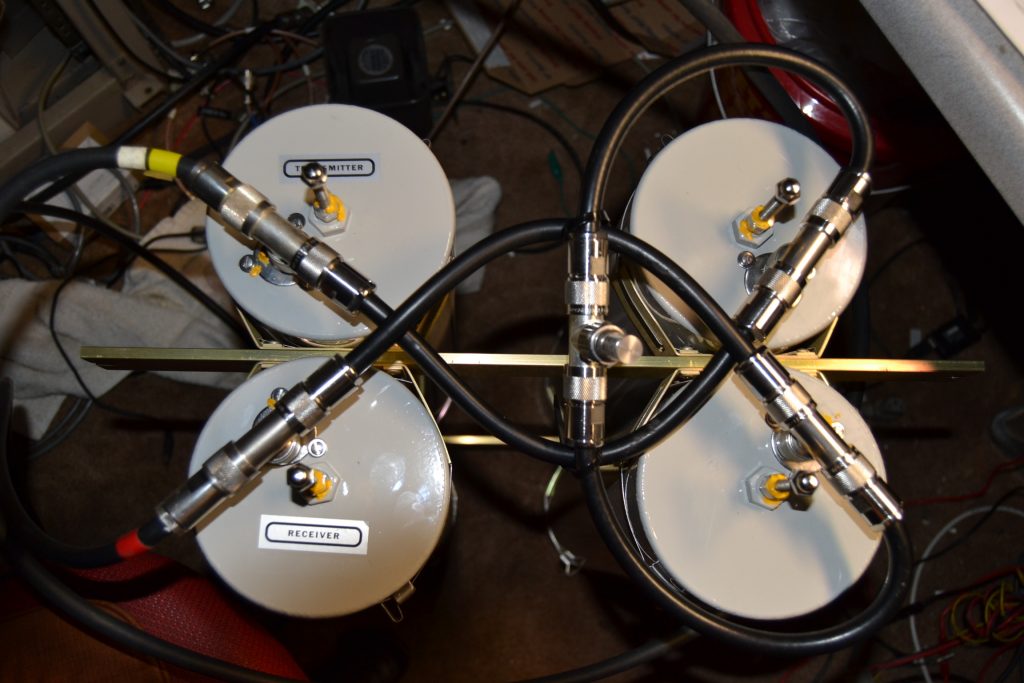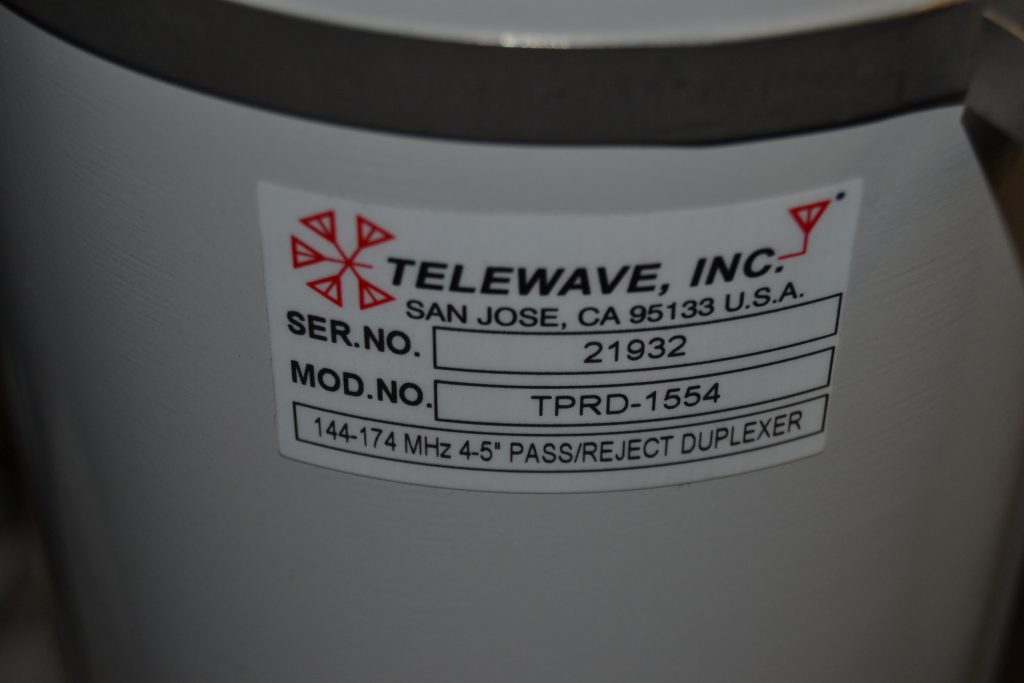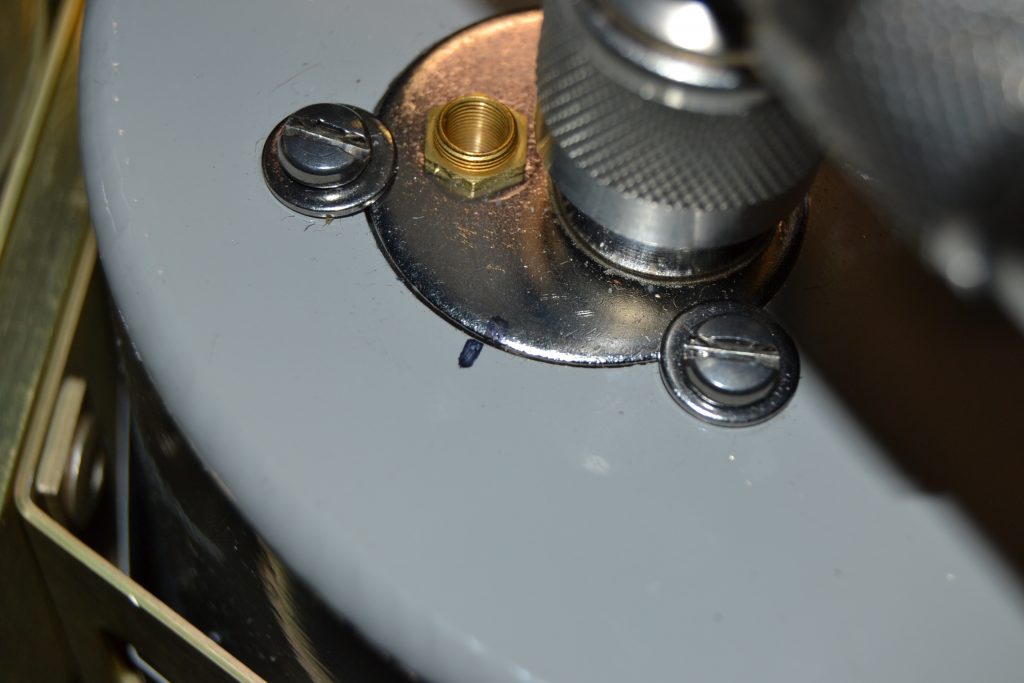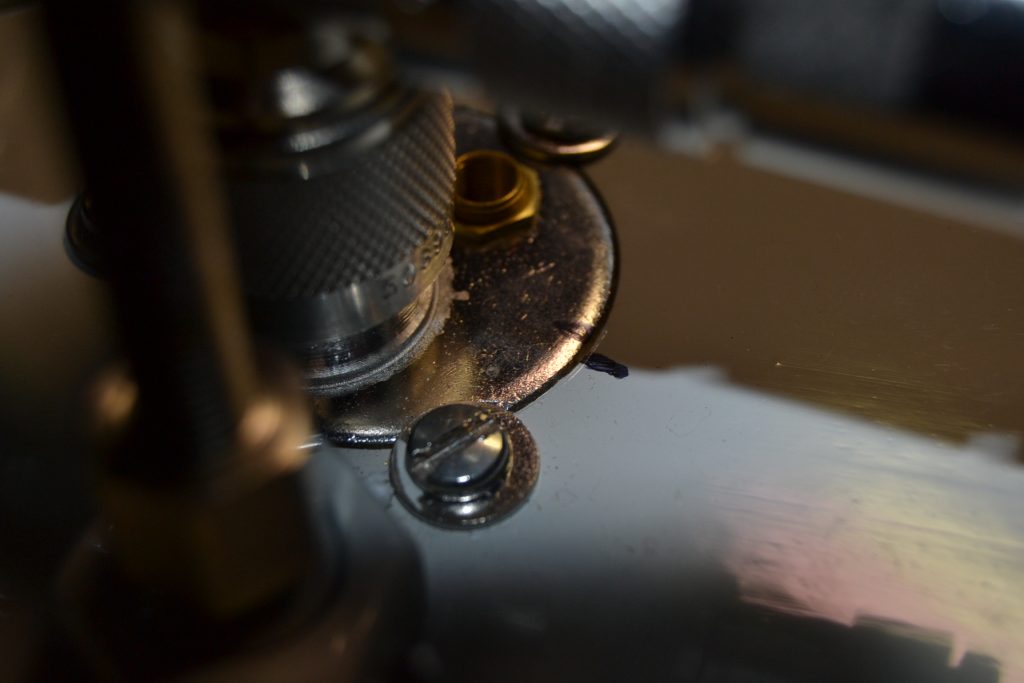Manufacturer: Telewave, Inc.
Model: TPRD-1554
Description: VHF/2M 4-Cavity BP/BR Duplexer Assembly
S/N: 21932
Service Requested: Repeater was not working properly. Test, repair, and tune as necessary.
Service notes:
On receiving these in the lab, initial testing showed duplexers were slightly mistuned, with Insertion Loss in both cavities which did not meet factory specifications.
Adjusted coupling loops on each cavity, resulting in better than factory spec IL in the High pass branch (used for transmit in this application.) Low pass branch (used for receive in this applications) was also adjustable to better than factory spec, but opted to keep that branch coupled just ever-so-slightly above factory specifications in order to achieve just above 80 dB of isolation from transmitter RF (factory spec for this set is 77dB @ 600 KHz channel spacing.)
High Pass Branch Reflection Testing
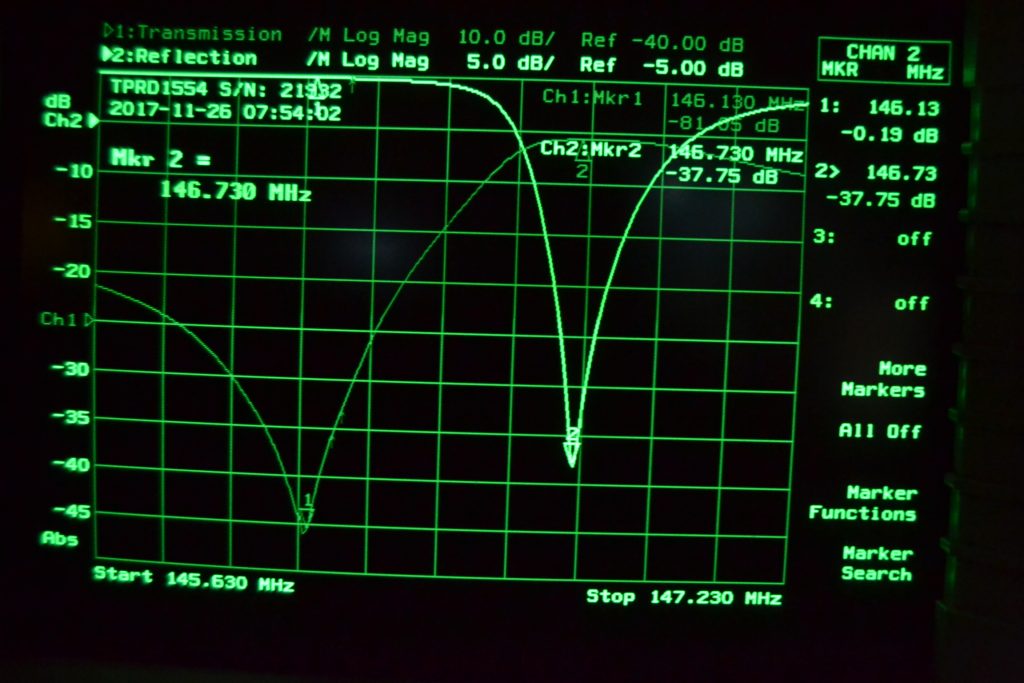
Pass Freq: 146.730 MHz
Return Loss: 37.75 dB
VSWR: 1.026:1
High Pass Branch Transmission Testing
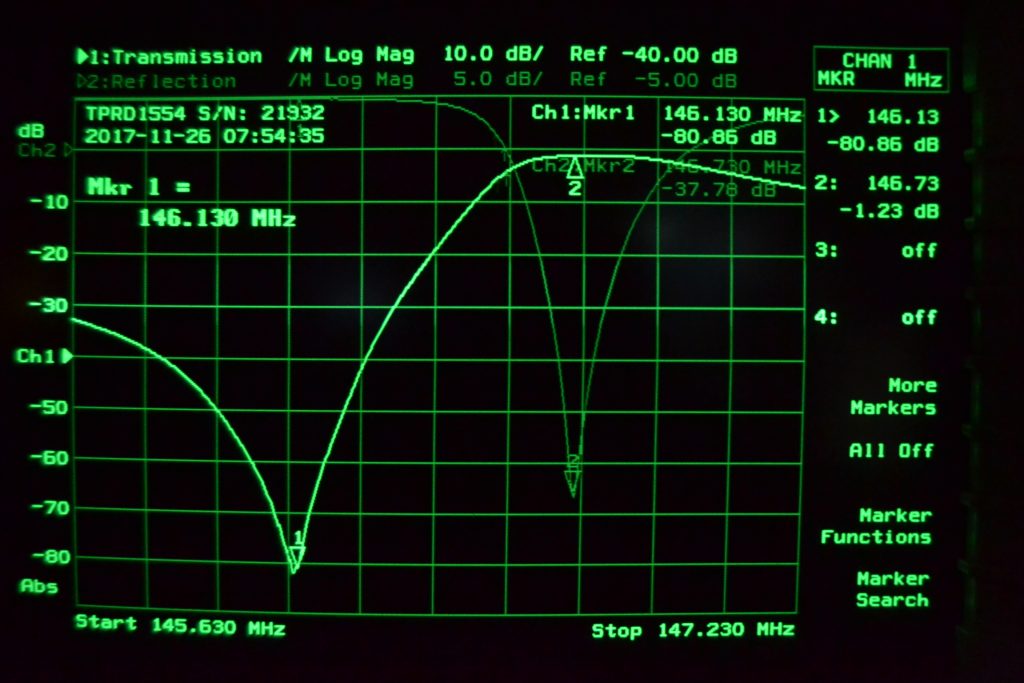
Rej Freq: 146.130
Isolation: 80.86 dB
Insertion Loss: 1.23 dB
Low Pass Branch Reflection Testing
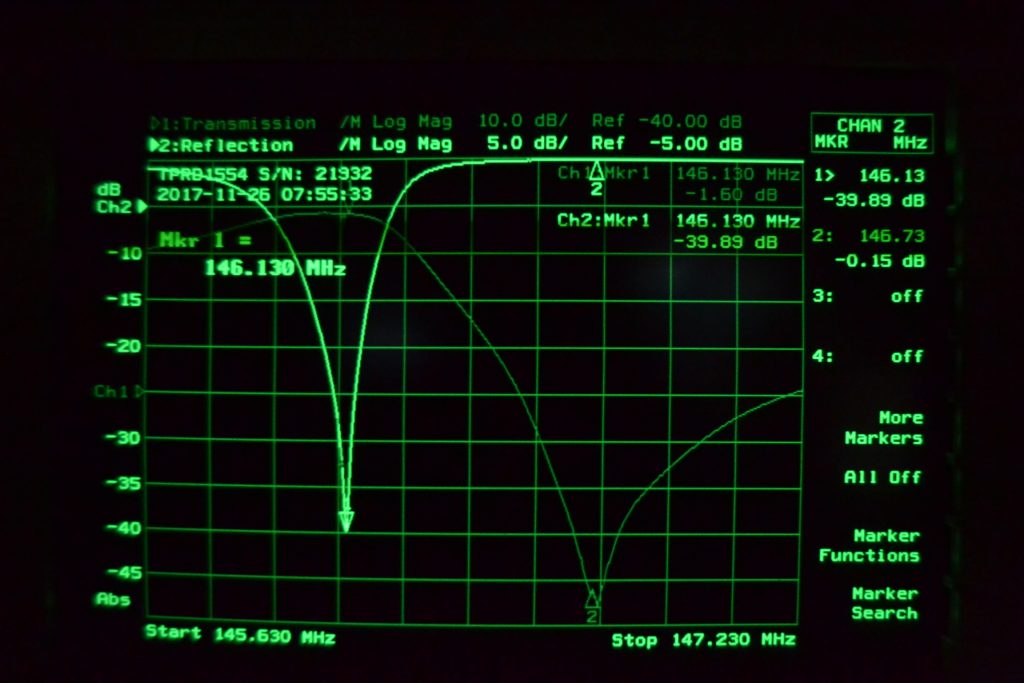
Pass Freq: 146.130 MHz
Return Loss: 39.89 dB
VSWR: 1.020:1
Low Pass Branch Transmission Testing
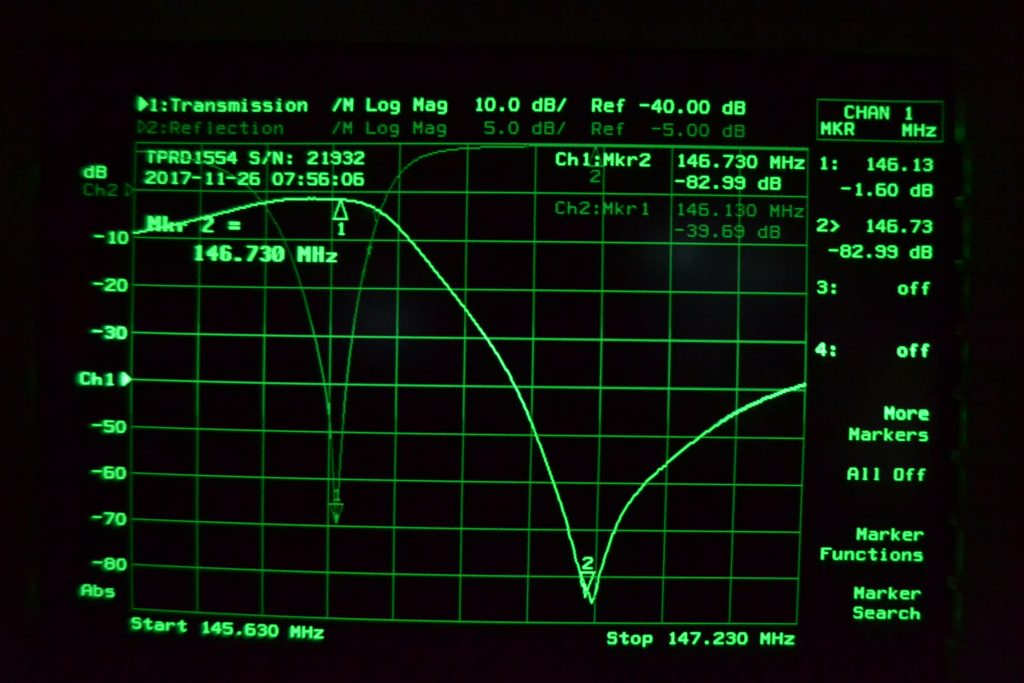
Rej Freq: 146.730 MHz
Isolation: 82.99 dB
Insertion Loss: 1.60 dB (Factory spec is 1.5 dB, but tuned slightly higher for benefit of 82.99 dB isolation compared to factory spec of 77 dB @ 600 KHz channel spacing.)
Coupling Loop Adjustments
The Sharpie pen marks on the coupling loops and cavities indicate were indicative of the coupling as received here in the lab. Those marks have been cleaned off and a sealant placed on the loops to secure them at the new settings. The thread-on factory caps used to protective the precision trimmer capacitors were all missing. Installed replacement protective caps on them and applied sealant. These capacitors are very sensitive and the caps should be kept on them at all times except while being adjusted or replaced, because even a small amount of moisture, dust, or other contaminants can cause the capacitance value to change and throw the reject tuning off, and it can also cause the caps to be permanently damaged due to arcing and corrosion of the gold, cylindrical capacitor plates.
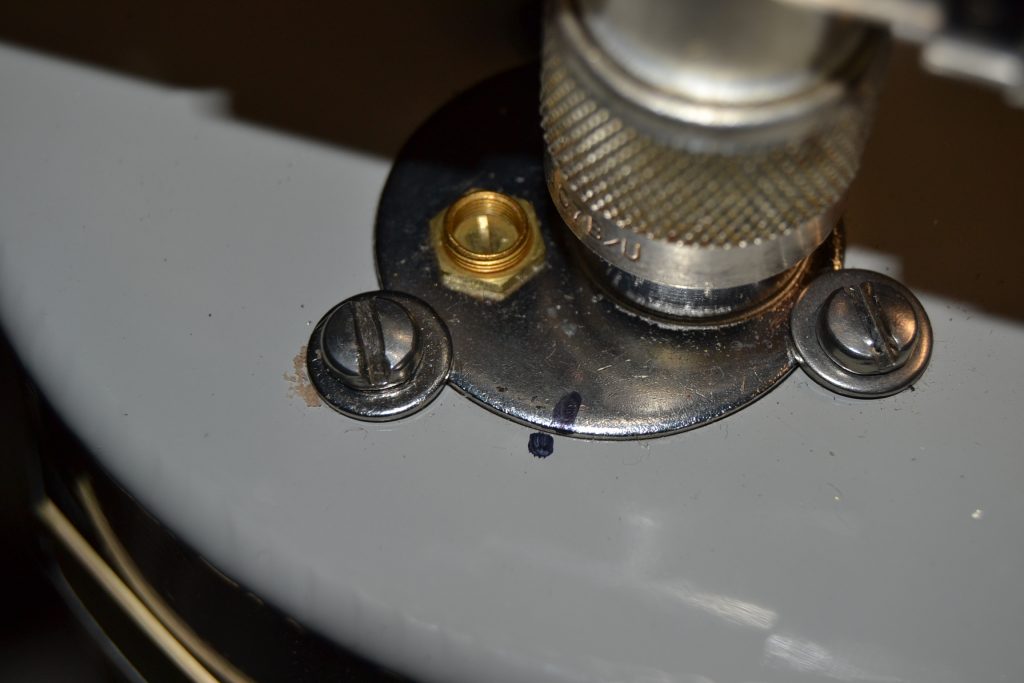
Reference Photos
